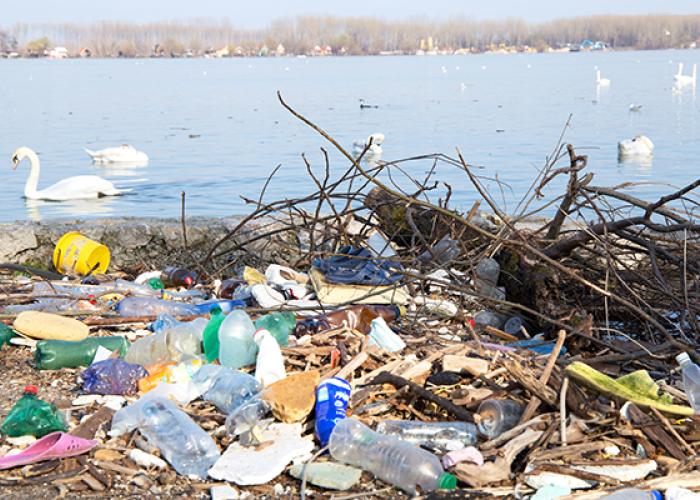Plastic pollution could persist at ocean surfaces for over a century
A new study co-led by scientists at HR Wallingford and Queen Mary University of London, has found that buoyant plastic pollution could remain at the ocean surface for more than 100 years, even if all plastic inputs were halted today.
Published in Philosophical Transactions of the Royal Society A: Mathematical, Physical and Engineering Sciences, the research presents a model that simulates how large plastic debris breaks down and interacts with marine snow, organic particles that help transport material to the deep sea. The findings offer critical insights into the long-term fate of microplastics and the challenges of removing plastic from marine environments.
This study marks the final instalment in a trilogy exploring the journey of plastic from ocean surface to seafloor, building on previous work published in Nature Water and Limnology & Oceanography. It brings together expertise in marine geochemistry, fluid dynamics, and environmental modelling from Queen Mary University of London and HR Wallingford.
Professor Andrew Manning, Technical Director at HR Wallingford and Associate Professor at the University of Plymouth, said: “This study helps explain why so much of the plastic we expect to find at the ocean surface is missing. As large plastics fragment, they become small enough to attach to marine snow and sink. But that transformation takes decades. Even after a hundred years, fragments are still floating and breaking down. To tackle the problem properly, we need long-term thinking that goes beyond just cleaning the surface.”
The model shows that degradation is the limiting factor in removing plastic from the ocean surface. Even after a century, around 10% of the original plastic may still remain afloat, continuing to release microplastics.
Dr Nan Wu, lead author from Queen Mary University of London, added: “People often assume that plastic in the ocean just sinks or disappears. But our model shows that most large, buoyant plastics degrade slowly at the surface, fragmenting into smaller particles over decades. These tiny fragments can then hitch a ride with marine snow to reach the ocean floor, but that process takes time.”
The research also highlights the potential risk to the ocean’s biological pump — a key mechanism for carbon and particle transport, if microplastic concentrations continue to rise. This could have wider implications for ocean health and biogeochemical cycles.
HR Wallingford’s contribution to this research reflects our commitment to tackling global environmental challenges through advanced modelling and applied science. The work was funded by the Lloyd’s Register Foundation and supported by Queen Mary University of London, HR Wallingford, and the EU INTERREG Preventing Plastic Pollution project.
Authors
- Dr Nan Wu, Queen Mary University of London; British Antarctic Survey
- Dr Stuart Grieve, Queen Mary University of London
- Professor Andrew Manning, HR Wallingford Ltd; University of Plymouth
- Professor Kate Spencer, Queen Mary University of London
Previous papers in the series
- Nature Water: https://www.nature.com/articles/s44221-024-00332-4
- Limnology & Oceanography: https://aslopubs.onlinelibrary.wiley.com/doi/10.1002/lno.12814

